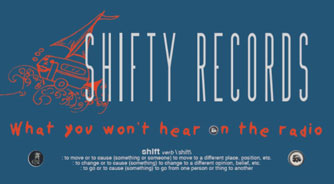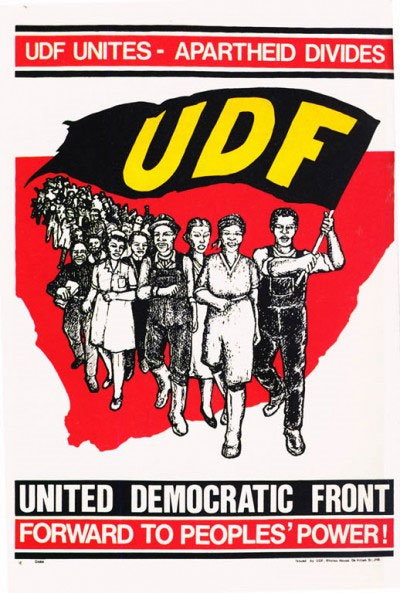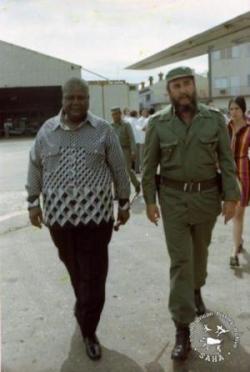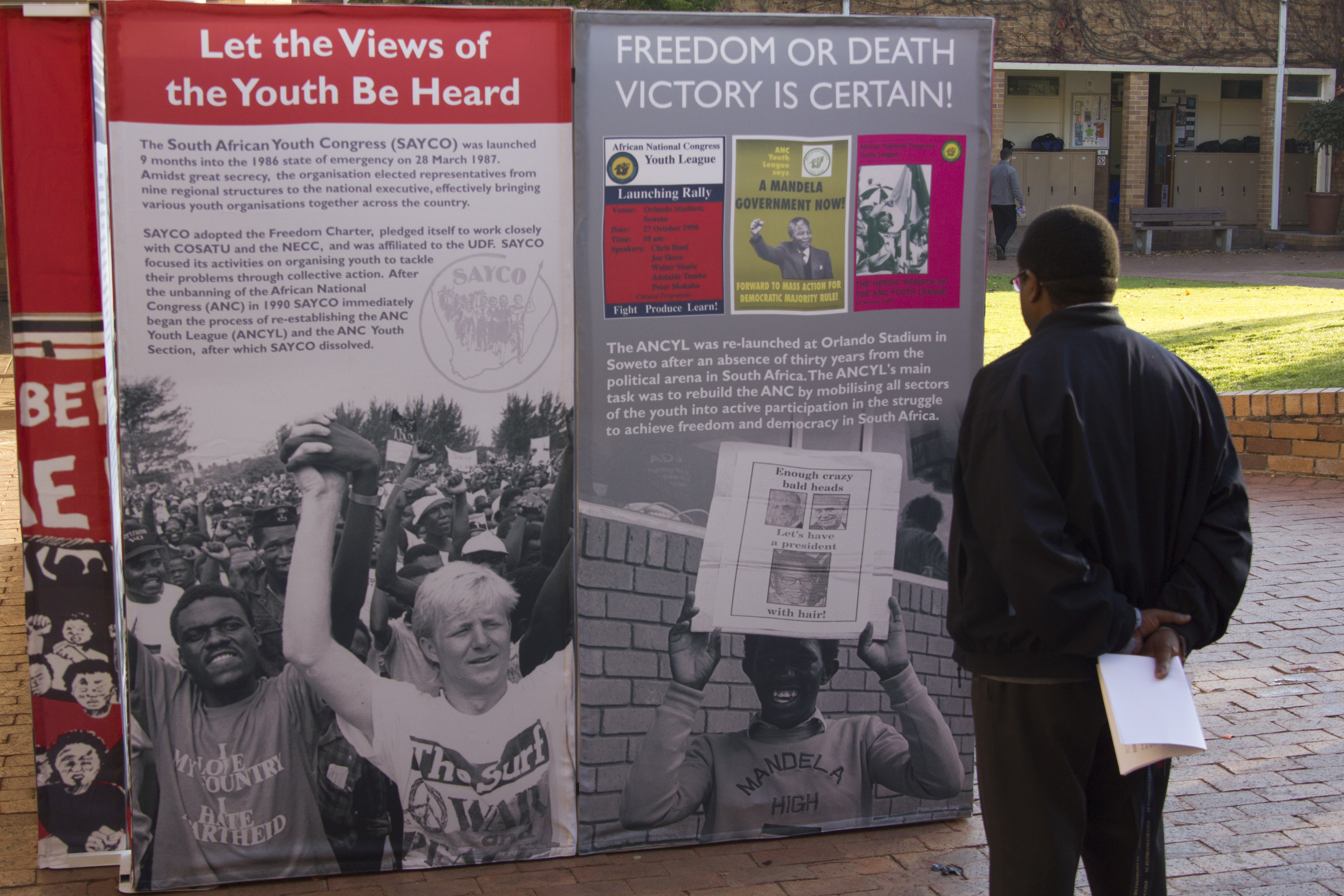We are currently celebrating heritage month. The archival staff thought this would be a great opportunity to feature some of the ways we make the content of our archives available to the South African public. These include projects such as SAHA in the Classroom; the exhibitions for loan; and our collection of virtual exhibitions.
One of the ways in which SAHA has tried making information from the archive accessible is by creating portable thematic exhibition kits. There is no fee charged for hiring these kits. The panels are free standing and easily fit to any space. The three exhibitions available are on Youth resistance to apartheid; Labour movement’s resistance and the role of women in the struggle.
SAHA periodically hosts workshops for history teachers. Content which is relevant to This series is all available for download: the curriculum has been taken from the archive and packaged into teaching resources to add an interesting dynamic to education of learners. This allows the use of primary sources in the classroom with the intention of adding diversity and interest to the topics being examined. This series was developed with the financial support of the Rosa Luxemburg Foundation.
The 1983 Constitution; The United Democratic Front (UDF) and the National Forum; Formal repression in the 1980s; Covert repression in the 1980s; Resistance in the 1980s - civil society; Resistance in the 1980s - civil society; Resistance in the 1980s - civil society; Resistance in the 1980s – militancy; Resistance in the 1980s - international pressure; The move to democracy – negotiations; The move to democracy - the role of violence.

Shifty Records: What You Won’t Hear on the Radio: Established in the 1980s, Shifty Records was an independent musiclabel that recorded South African songs that revealed to the world the turbulent state of the nation under the oppressive apartheid regime. The exhibition is a compilation of materials from different South African History Archives collections and includes images, shift albums and posters.
End Conscription Campaign (ECC): The ECC was launched in 1984 as a widely publicised radical collective of activists and conscientious objectors opposed to the application of the Defence Act (1957) in 1967. It was fundamentally an anti-war movement but existing in the 1980s linked it to the broader anti-apartheid resistance movement. SAHA has a large number of ECC posters in the poster collection.
United Democratic Front (UDF): Established in 1983 when 475 ‘grass roots’ organizations came together against apartheid injustice. The goal of these civic, church, student and workers associations was to establish a non racial united South Africa. The UDF became one of the mass mobilizing organizations of the 1980s in the struggle against apartheid. The exhibition includes posters and photographs that document the UDF’s journey in bringing democracy to South Africa.

Hear our History, an introduction to learning and teaching oral history: This resource introduces and explains the importance of oral history in South Africa. It has interview tips for learners and essay structure guide. Included are tips for educators on how to teach this topic.
South Africa’s Bill of Rights: The Cornerstone of Democracy: The South African Bill of Rights represents the democratic values of equality, freedom and dignity for all. The birth of the Bill of rights is preceded by the drafting of the Freedom Charter, which was adopted in 1955 at the Congress f the People in Kliptown. This charter later received fortification in the Bill of Rights in 1994.
The Anti-Privatisation Forum (APF): The APF was established in July 2000 by activists and organizations that were against capitalism. This movement was largely aimed at retrieving silenced narratives of the post-1994 experience of poor communities that found themselves on the rim of political and socio-economic development.
Entering Tembisa: Tembisa is one of the largest townships in the southern hemisphere located in the East Rand, Gauteng. During the liberation struggle in South Africa the township played a very important role, however it is not as well documented as that of its counterpart Soweto. The exhibition draws from interviews, archival research and photographs to bring to light the history of Tembisa.
ZAPU: Through Zenzo Nkobi’s Lens: Zenzo Nkobi was a Zimbabwean photographer who was affiliated to the Zimbawe African People’s Union (ZAPU) from the 1970s to the 1980s. This exhibition is an assemblage of photographs and interview transcripts that tell the story of ZAPU’s liberation struggle. 
Women Hold Up Half the Sky: Using photographs, posters, documents retrieved from the archives this exhibition showcases the contributions done by women in the struggle against racial and gender discrimination. Historical events such as the 9th August 1956 Women’s march is also covered.
Hlanganani Basebenzi: Commemorating South Africa’s Labour Movement: The exhibition includes photographs, posters and documents produced by labour unions that were involved in fighting for the working class during the struggle for justice. Some of the unions include COSATU, NUM, SACTU and SADWU.
The Future is Ours: Commemorating the Youth in the Struggle: 16 June 1976 marks a very historic event in South Africa where young people took the streets to fight against the unjust apartheid laws. Since then the 16th of June have come to represent and commemorate the role played by young people in liberating South Africa. Posters and photographs can be viewed in this exhibition as well as class activities.
Tracing the Unbreakable Thread: Non-racialism in South Africa: Adopted from Julie Frederikse’s The Unbreakable Thread: Non-racialism in South Africa, the exhibition reproduces the traditional and ideological history of non-racialism in South Africa. It incorporates over 100 interviews with liberation struggle veterans such as Dorothy Nyembe and Joe Slovo, as well as photographs and posters.
Coming soon: Land Act and Images of Defiance
SAHA is currently working on two projects which will have virtual exhibitions. The first is the Land Act Project which relates to forced removals. The Images of Defiance is being republished for its 25th anniversary.










